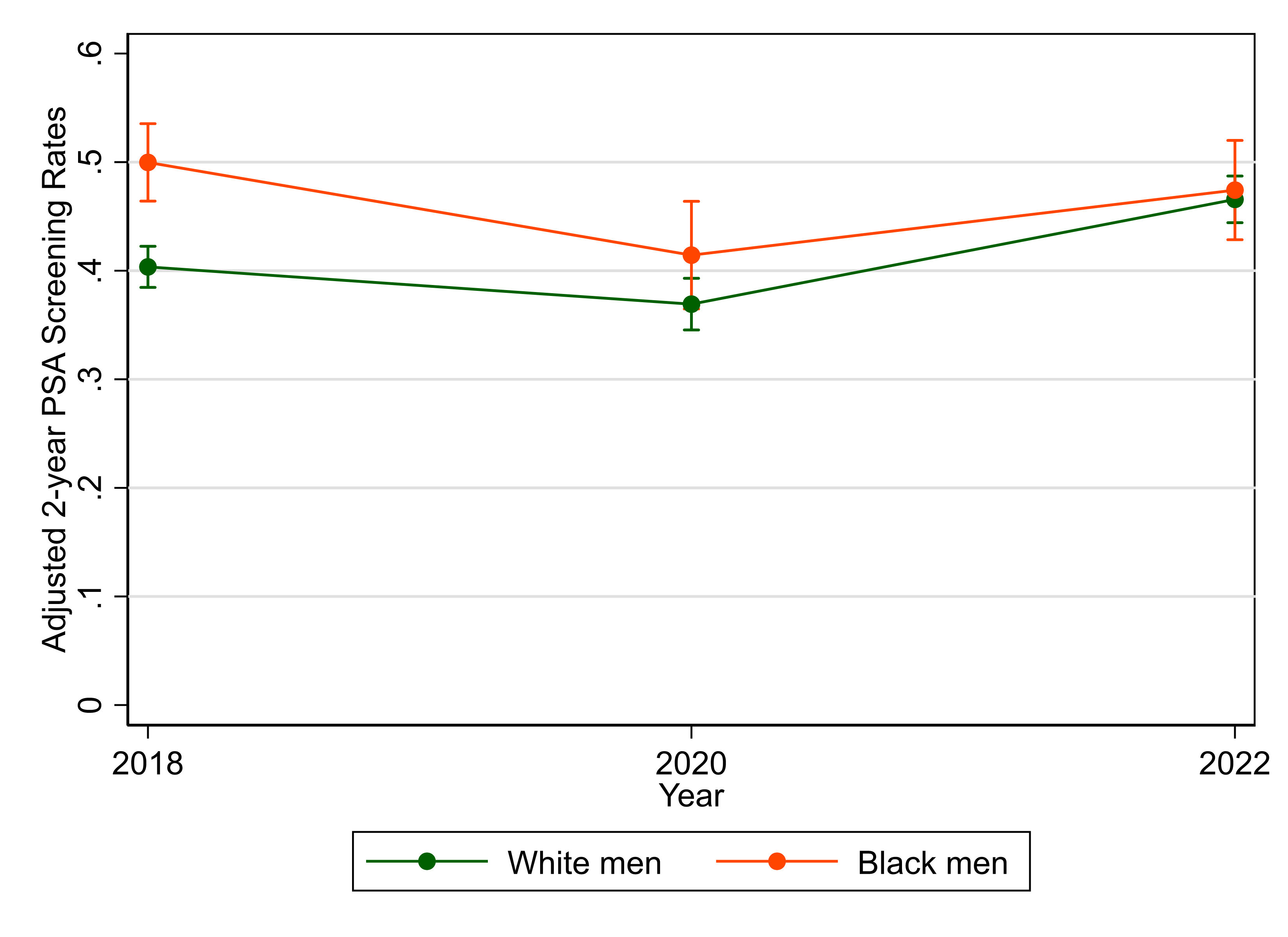Background: The COVID-19 pandemic disrupted healthcare systems, affecting preventive measures like PSA screening for prostate cancer. This study examines the recovery trends in PSA screening rates, emphasizing racial disparities. Methods: We identified Black and White men aged 45-75 years from the Behavioral Risk Factor Surveillance System database, biennially from 2018 to 2022. This age cohort was selected based on the National Comprehensive Cancer Network guidelines. Primary outcome was the incidence of PSA screening within two years of each survey period. Respondents from states lacking longitudinal data during the study period were excluded. We employed adjusted logistic regression models, incorporating a two-way interaction term between race and survey year, to explore temporal trends among Black and White men. Results: Our study included a weighted total of 1.12 million men. A significant interaction was observed between race and survey year (pint=0.01). Adjusted rates of PSA screening for White men were 45.2%, 41.2%, and 52.7% from 2018 to 2022. For Black men, these rates were 55.1%, 43.2%, and 52.5% (Figure 1). Between 2018 and 2020, PSA screening declined for both White men (aOR=0.83, 95% CI [0.72, 0.98]) and Black men (aOR=0.65, 95% CI [0.48, 0.88]). Conversely, from 2020 to 2022, we saw an increase in screening in White men (aOR=1.62, 95% CI [1.39, 1.92]), however Black men did not exhibit statistically significant changes (aOR=1.35, 95% CI [0.96, 1.89]) Marginal effect analyses revealed significant differences in the rate of change between White and Black men for the periods 2018-2020 and 2020-2022 (p=0.036 and p=0.006, respectively). Conclusions: While PSA screening rates for both Black and White men declined initially (2018-2020) and subsequently increased (2020-2022), the rate of change differed significantly between the two racial groups. Specifically, Black men faced a more pronounced decline in PSA screening during the pandemic and a slower rate of recovery post-pandemic, underscoring deep-rooted healthcare inequalities. Targeted interventions, such as community outreach and education programs tailored for Black men, are urgently needed to bridge this gap.
